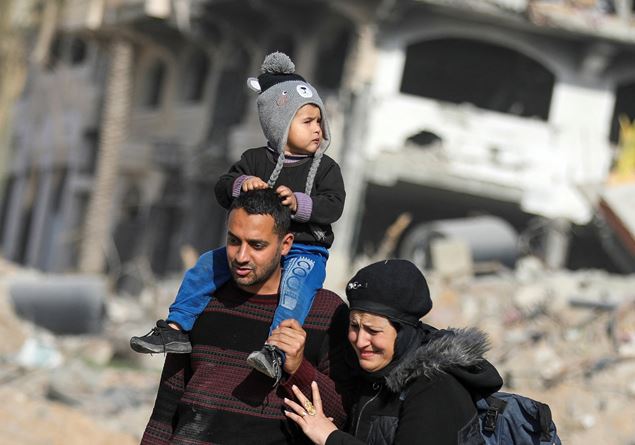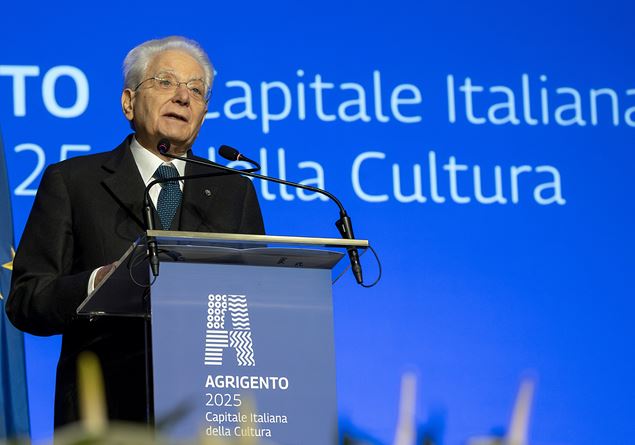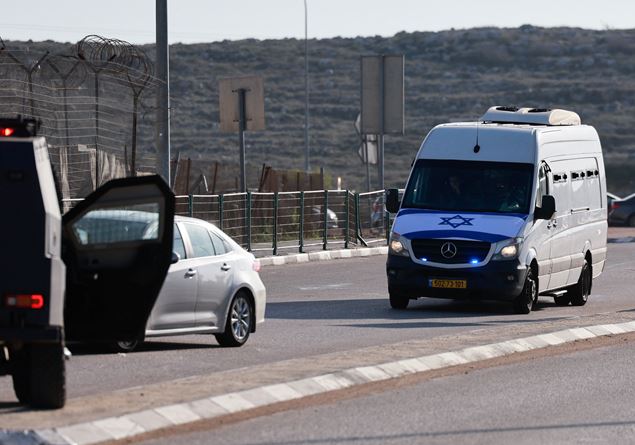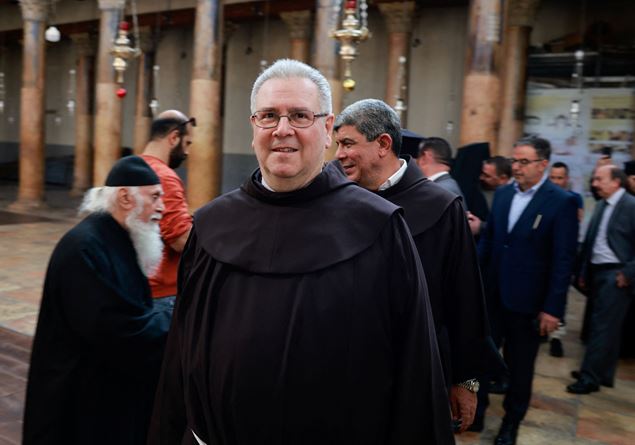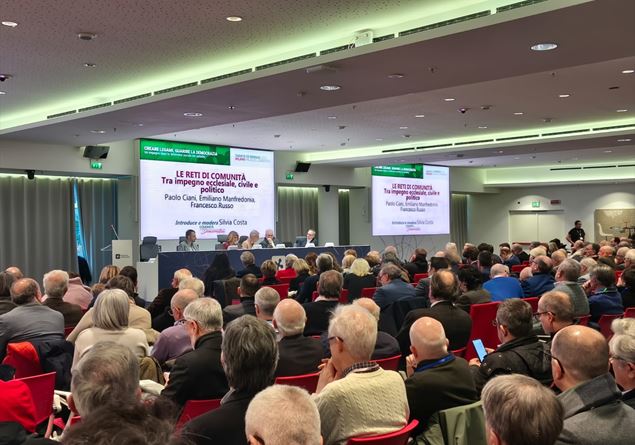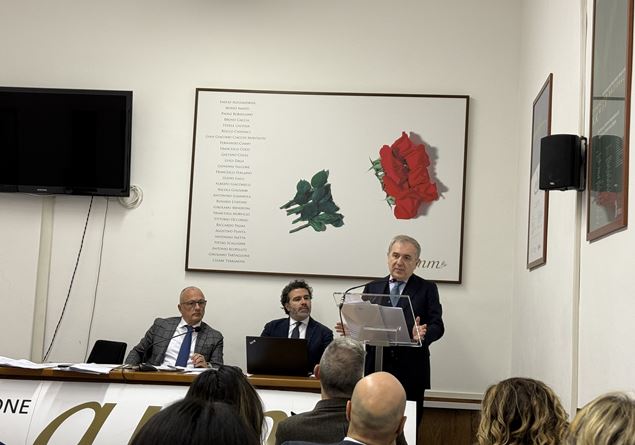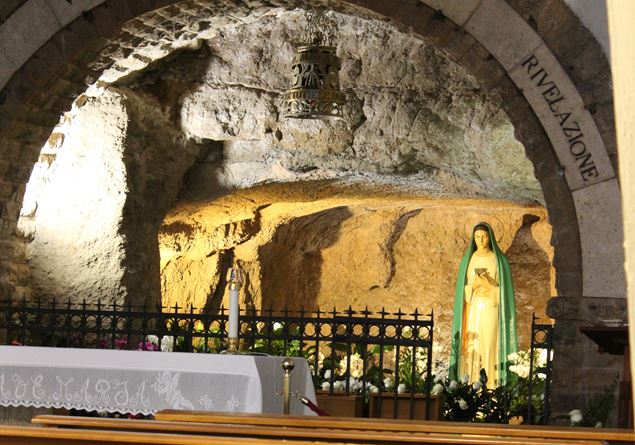
Cardinal Cristoph Schönborn, right, with Monsignor Baldassarre Reina.
«Even if they evoke great trials in the Church and in the world, such as the counter-witness of many priests and a possible third world war which would also destroy St. Peter’s Basilica, the words of the Virgin are nevertheless full of hope: “Love one another with the others. Love conquers all. Unite in love, have only one rule: the living Gospel”. Thus writes Cardinal Cristoph Schönborn, metropolitan archbishop of Vienna and president of the cardinal control commission for religious works in the introduction of The Virgin of Revelation. The message of the Three Fountainsdedicated by François Vayne to the mariophany of 12 April 1947, when the Madonna appeared to Bruno Cornacchiola, a violent sectarian who planned to kill the Pope and his three children in an infamous cave along the Laurentina, in Rome, today a sanctuary, a destination of pilgrimages, a pulsating center of prayer and conversion.
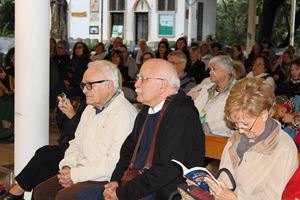
Carlo, on the left, and Luigi Cornacchiola.
The book, after its good success in France, has just been published in Italy by Ares and presented in this very place. «The closeness of Mary», said the cardinal, world-famous theologian, student of Benedict XVI, who worked on the drafting of the Catechism of the Catholic Church, «today, in the midst of what, as he often reminds us Pope Francis is a real “piecemeal world war” is even more important. We in Vienna are very close to Ukraine and feel the disastrous effects of the conflict, just one of many that are raging around the world and for which it seems impossible to find a solution. We all know well what is happening in the Middle East, but no one talks about South Sudan, the millions of refugees forced to leave their homeland due to a bloody fratricidal struggle and many other places where all hope seems to be in vain. How can we not lose it and continue to believe in peace? And so she who Jesus left us as Mother supports us, it is no coincidence that we invoke her, in the Hello Regina as “Mother of mercy, life, sweetness and our hope”. Alone we could not keep this strength of hope alive, light in the darkness, we need her to bring us back to the Son. This is a place, like Lourdes, where many have experienced the tenderness of the Virgin humanly, bodily.”
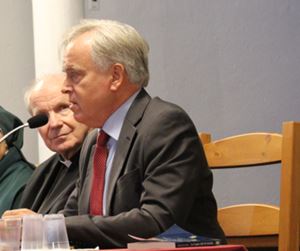
François Vayne.
When asked about a section of the message that Mary would have entrusted to Cornacchiola (“I am the one who am in the Trinity”) and the reflection that it can arouse from a theological point of view, Schönborn replied: “This is the Christian vocation, there The Gospel of John says so (1.35, 40) the disciples ask: “Master, where do you live?”. And Jesus: “Come and see”. Mary who precedes us in salvation lives in the Trinity, the home of the Father for those who embrace the Gospel and live according to it. Those words are a beautiful invitation to reorient our lives through the love of the Lord, to change our gaze because as Jesus said “whoever loves me will be loved by the Father”.
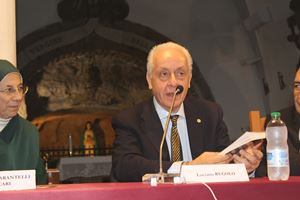
Luciano Regolo.
Monsignor Baldassarre Reina, vicar general of the diocese of Rome since 6 October, among the new cardinals created by Pope Francis in the next consistory of 8 December, recalled the importance of Marian sanctuaries as places of reconciliation and encounter with God, even more so view of the Jubilee of 2025 and the following one of 2033 for the second millennium of the Redemption, a theme also reiterated by Mother Rebecca Nazzaro, superior of the Missionaries of Revelation, a religious institute which is one of the tangible fruits of the spiritual experience gained at Tre Fontane in over the decades, and director of the diocesan pastoral care for pilgrimages, effectively reconstructing the deepest meaning of the message left by Mary, with the Bible in her hand and the green cloak, in a cave that is a place of sin and death, where clandestine abortions were practiced, it was transformed into a place of rebirth of the soul, which welcomes families, increasingly undermined by contemporary logic and where people constantly pray for the magisterium of the Pontiff. The latter is a striking detail if we take into account that the seer had already purchased a dagger in Spain, during the Civil War, to kill Pius XII, to whom he later, repentant, handed it over. Even Cornacchiola, explained Vayne, the author of the essay, which makes use of many unpublished documents preserved in the archives of the Holy Office, «underwent a true internal metamorphosis, he fought against his limits and his doubts. His uncertainties, his weaknesses, are a useful testimony for each believer, because all of us are a bit of Bruno Cornacchiola and we can overcome our imperfections, only by completely opening our hearts to God.”
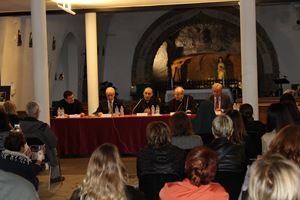
A moment from the presentation of Vayne’s book.
The rector of the sanctuary Don Renato Tarantelli Baccari, who composed a beautiful prayer dedicated to the Virgin of Revelation approved by the Pope, then recalled the link between the mariophany of the Three Fountains and the dogma of the Assumption, whose 75th anniversary will be celebrated on 1 November 2025, in the final stretch of the Jubilee: «The words of Our Lady to the seer “My body could not rot and did not rot, were taken as further confirmation by Pius XII on the opportunity of declaring a truth of faith which indicates to us in Mary is the path of rebirth that awaits those who love God. She is, as Pope Francis says, the forerunner on the path to salvation.” Don Renato also showed an image of the original statue whose facial features have been altered by an aggressive restoration, announcing the intention of a new intervention that would restore the simulacrum to its original appearance. Moderating the debate, in the presence of a large audience, was Luciano Regolo, co-director of Famiglia Cristiana e Maria con te, who underlined how in many aspects the history of this sanctuary, named at the behest of Saint John Paul II as Santa Maria del Terzo Millennium at the Three Fountains, on whose wonders there has not yet been an official pronouncement from the Church, has anticipated the orientation “codified” in the new norms for the discernment of mystical phenomena, which favor spiritual fruits as the deciding criterion and encourage healing pastoral care of pilgrims. Two crucial elements from the beginning in this corner along the Laurentina since Pius XII did not listen to the poisons about the alleged apparitions, remembering how many graces and conversions had been recorded in a short time and the custody of the cave, transformed into a church, was entrusted to the Franciscans. At the end of the meeting, the brief but intense testimony of Carlo Cornacchiola, one of the three children, Bruno’s sons, who saw the Beautiful Lady with him back in 1947: «They often ask me to describe what she was like, and I always answer same way: there are no words to describe the beauty of Paradise, we will have to wait to see it.”


